 W
WAchalinus formosanus, common name Formosan odd-scaled snake or Taiwan burrowing snake, is a non-venomous snake in family Xenodermatidae that is found in Taiwan and in the southern Ryukyu Islands (Japan).
 W
WAchalinus niger, common name black odd-scaled snake or black burrowing snake, is a snake in family Xenodermatidae that is endemic to Taiwan.
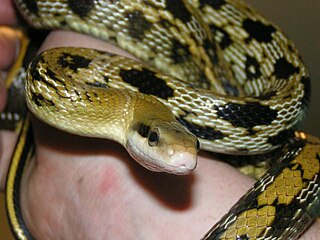 W
WThe beauty rat snake, also called the beauty ratsnake, the beauty snake, or the cave racer, is a species of snake in the family Colubridae. The species is native to the eastern and southeastern regions of Asia. It is a long, thin, semi-arboreal species of snake with several recognized subspecies. This constrictor feeds on rodents, and though it is favored in some locations as a natural pest control or pet, it is also considered an invasive species in other locations.
 W
WThe black-banded sea krait, also known commonly as the Chinese sea snake, is a species of venomous snake in the subfamily Laticaudinae of the family Elapidae. In Japan it is known as erabu umi hebi (ja:エラブウミヘビ), and in Okinawa as the irabu. It is found in most of the warm waters of the western Pacific Ocean.
 W
WThe blue-lipped sea krait, blue-banded sea krait, or common sea krait is a species of venomous sea snake in the subfamily Laticaudinae, family Elapidae. It is found in the Indian and Western Pacific Oceans.
 W
WBoiga kraepelini, commonly known as the square-headed cat snake, Kelung cat snake, or Taiwanese tree snake is a species of mildly venomous snake in the family Colubridae. The species is endemic to East Asia and Southeast Asia. Its specific name, kraepelini, honours Karl Kraepelin, a German naturalist. The common name, Kelung cat snake, refers to its type locality, Keelung in northern Taiwan.
 W
WThe Botel gecko is a species of gecko, a lizard in the family Gekkonidae. The species is endemic to Orchid Island of Taiwan.
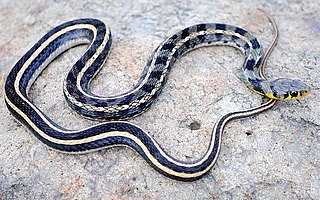 W
WThe buff striped keelback is a species of nonvenomous colubrid snake found across Asia. It is the sole species of genus Amphiesma. It is a typically nonaggressive snake that feeds on frogs and toads. It belongs to the subfamily Natricinae, and is closely related to water snakes and grass snakes. It resembles an Asian version of the American garter snake. It is quite a common snake but is rarely seen.
 W
WThe checkered keelback, also known commonly as the Asiatic water snake, is a common species of mild venomous snake in the subfamily Natricinae of the family Colubridae. The species is endemic to Asia.
 W
WThe Chinese box turtle, also known as the yellow-margined box turtle, or golden-headed turtle, is a species of Asian box turtle. Taxonomically, it is called Cuora flavomarginata.
 W
WThe Chinese cobra, also called Taiwan cobra, is a species of cobra in the family Elapidae, found mostly in southern China and a couple of neighboring nations and islands. It is one of the most prevalent venomous snakes in China and Taiwan, which has caused many snakebite incidents to humans.
 W
WMauremys reevesii, commonly known as the Chinese pond turtle, the Chinese three-keeled pond turtle, or Reeves' turtle, is a species of turtle in the family Geoemydidae, a family which was formerly called Bataguridae. The species is endemic to Asia.
 W
WThe Chinese stripe-necked turtle or golden thread turtle, is a species of turtle in the family Geoemydidae.
 W
WThe Chinese water snake, Chinese smooth water snake, Chinese mud snake or Chinese rice paddy snake is a species of mildly venomous, rear-fanged snake, endemic to Asia.
 W
WThe collared reed snake is a species of colubrid snake found in Asia. In Japan, it is also called Miyara's collared snake.
 W
WThe common house gecko, is a gecko native to Southeast Asia. It is also known as the Asian house gecko, Pacific house gecko, wall gecko, house lizard, or moon lizard.
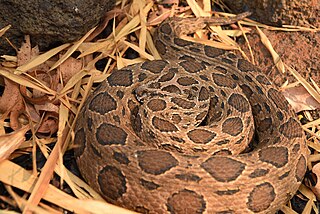 W
WDaboia siamensis is a venomous viper species, which is endemic to parts of Southeast Asia, southern China and Taiwan. It was formerly considered to be a subspecies of Daboia russelii, but was elevated to species status in 2007.
 W
WDeinagkistrodon is a monotypic genus created for the venomous pit viper species, D. acutus, which is endemic to Southeast Asia. No subspecies are currently recognized.
 W
WDiploderma polygonatum, also known as Ryukyu japalure and Okinawa tree lizard, is a species of lizard found in the Ryukyu Islands and Taiwan. It is diurnal and arboreal. An adult male Diploderma polygonatum measures "61 mm. from snout to vent, and 152 mm. from vent to tip of tail; total length 213 mm." The splenial of this lizard is short, as is that of Trapelus agilis.
 W
WDiploderma swinhonis, also known commonly as the Taiwan japalure, Swinhoe's japalure, Swinhoe's lizard, and Swinhoe's tree lizard, is a species of lizard in the family Agamidae. The species is native to Taiwan.
 W
WElaphe carinata, the king ratsnake, is a species of Colubrid snake found in Southeast Asia and East Asia.
 W
WEmydocephalus ijimae, also called Ijima's sea snake and Ijima's turtleheaded sea snake, is a species of snake in the family Elapidae. The species is endemic to East Asia. E. ijimae feeds exclusively on the eggs of coral reef fishes, which makes them an important predator for maintaining a healthy coral reef ecosystem.
 W
WThe Mandarin rat snake is a species of nonvenomous colubrid snake endemic to Asia. It is closely related to Euprepiophis conspicillata, the Japanese forest rat snake. Mandarin rat snakes are one of the most popular rat snakes found in the pet trade.
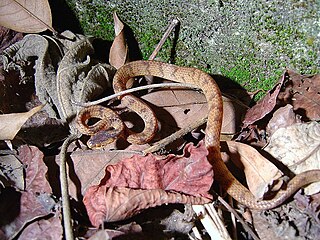 W
WFormosa slug snake or Taiwan slug snake, Pareas formosensis, is a species of non-venomous snake in the family Pareatidae. It is endemic to Taiwan.
 W
WGekko hokouensis, also known as the Hokou gecko or Kwangsi gecko, is a species of gecko. It is found in eastern China, the Ryukyu Islands and Kyushu Island of Japan, and Taiwan.
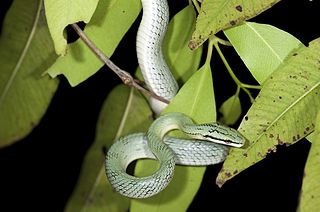 W
WGonyosoma frenatum is a species of colubrid snake found in Northeast India, southern China, Taiwan, and Vietnam.
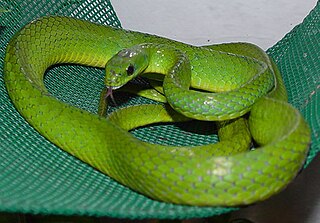 W
WThe greater green snake or Chinese green snake is a snake of the family Colubridae.
 W
WHemiphyllodactylus typus, also known as the Indopacific tree gecko, Indopacific slender gecko, or common dwarf gecko, is a species of gecko found in South Asia, Southeast Asia, and East Asia, and some islands in the Indian and Pacific Oceans.
 W
WHydrophis peronii, commonly known as the horned sea snake, Peron's sea snake, and the spiny-headed seasnake, is a species of venomous snake in the subfamily Hydrophiinae of the family Elapidae. The species is endemic to the western tropical Pacific Ocean. It is the only sea snake with spines on the head. Like all other members of the family Elapidae, it is venomous. It is sometimes placed in its own genus Acalyptophis.
 W
WIndotyphlops braminus, commonly known as the brahminy blind snake and other names, is a nonvenomous blind snake species found mostly in Africa and Asia, but has been introduced in many other parts of the world. They are completely fossorial animals, with habits and appearance similar to earthworms, for which they are often mistaken, although close examination reveals tiny scales rather than the annular segments characteristic of true earthworms. The specific name is a Latinized form of the word Brahmin. No subspecies are currently recognized.
 W
WLepidodactylus lugubris, known as the mourning gecko or common smooth-scaled gecko, is a species of lizard, a gecko of the family Gekkonidae.
 W
WLycodon rufozonatus is a species of snake in the family Colubridae. The species is native to East Asia. It is medium-sized, nocturnal, and is considered non-venomous. Two subspecies are recognised, one of which, L. r. walli, is restricted to the Ryukyu Archipelago.
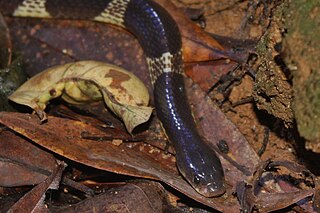 W
WThe many-banded krait, also known as the Taiwanese krait or the Chinese krait, is an extremely venomous species of elapid snake found in much of central and southern China and Southeast Asia. The species was first described by the scientist Edward Blyth in 1861. This species has two known subspecies, the nominate Bungarus multicinctus multicinctus, and Bungarus multicinctus wanghaotingi. The many-banded krait mostly inhabits marshy areas throughout its geographical distribution, though it does occur in other habitat types.
 W
WOreocryptophis porphyraceus is a rat snake species, commonly called the black-banded trinket snake, red bamboo snake, Thai bamboo rat snake or red mountain racer, found in mid to upper-level elevations of forested hills in southeastern Asia, ranging from evergreen tropical to dry seasonal forests depending on the subspecies and locality. It is the only member of the genus Oreocryptophis, but it was formerly placed in Elaphe.
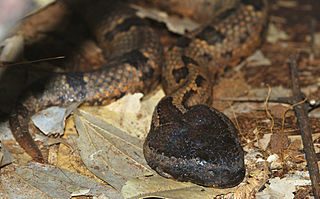 W
WOvophis monticola is a venomous pitviper species found in Asia. Currently, two subspecies are recognized, including the nominate subspecies described here. Recent taxonomic work suggests that most of these should be considered as separate species. IUCN has already evaluated O. m. makazayazaya as Ovophis makazayazaya.
 W
WPlagiopholis styani, also known by the common name Chinese mountain snake, is a species of colubrid snake. Its type locality is Kuatun in Wuyishan, Fujian. It is found in southern and central China, Taiwan, and northern Vietnam. It is an uncommon species, and very rare in Taiwan. It is named after Frederick William Styan, a Shanghai-based English tea merchant and ornithologist.
 W
WProtobothrops mucrosquamatus is a venomous pit viper species endemic to Asia. Common names include: brown spotted pit viper, and pointed-scaled pit viper. No subspecies are currently recognized. The species was first described by Theodore Cantor in 1839.
 W
WPsammodynastes pulverulentus, the common mock viper, is a species of snake native to Asia.
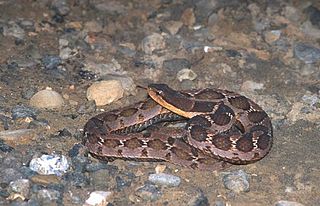 W
WPseudagkistrodon rudis, also known as red keelback, false habu, and false viper, is a species of snake in the family Colubridae. It is found in southwest, south, and east China and in Taiwan. One subspecies, Pseudagkistrodon rudis multiprefrontalis Zhao and Jiang 1981 from Sichuan, is recognized, in addition to the nominotypical one.
 W
WPtyas korros, commonly known as the Chinese ratsnake or Indo-Chinese rat snake, is a species of colubrid snake endemic to Southeast Asia.
 W
WPtyas mucosa, commonly known as the oriental ratsnake, Indian rat snake, 'darash' or dhaman, is a common species of colubrid snake found in parts of South and Southeast Asia. Dhamans are large snakes. Typical mature total length is around 1.5 to 1.95 m though specimens exceeding 2 m are not uncommon. The record length for this species was recorded as 3.7 m, second in size perhaps only to their cousin Ptyas carinata among all known living colubrid snakes. Despite their large size, oriental ratsnakes are usually quite slender with even a specimen of 2 m commonly measuring 4 to 6 cm only around in diameter. Furthermore, the average weight of ratsnakes caught in Java was around 877 to 940 g, though larger males of over 2.3 m may easily weigh over 2.5 kg (5.5 lb). Their colour varies from pale browns in dry regions to nearly black in moist forest areas. Dhamans are diurnal, semi-arboreal, non-venomous, and fast-moving. Dhamans eat a variety of prey and are frequently found in urban areas where rodents thrive.
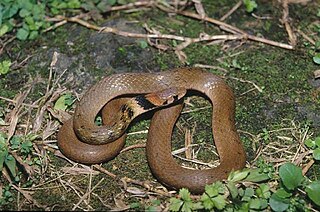 W
WRhabdophis swinhonis is a species of snake in the subfamily Natricinae of the family Colubridae. The species is endemic to Taiwan. It is also known commonly as the Taiwan keelback and Swinhoe's grass snake.
 W
WRhabdophis tigrinus, the tiger keelback, kkotbaem, or yamakagashi, is a venomous colubrid snake found in East and Southeast Asia. Many sources, though not ITIS, recognize one subspecies, Rhabdophis tigrinus formosanus of Taiwan.
 W
WThe rice paddy snake or plumbeous water snake is a species of mildly venomous, rear-fanged snake endemic to South Asia.
 W
WRussell's viper is a species of venomous snake in the family Viperidae native to the Indian subcontinent. It was described in 1797 by George Shaw and Frederick Polydore Nodder, and named in honour of Patrick Russell who wrote of it in his 1796 work An account of Indian serpents, collected on the coast of Coromandel.
 W
WScincella formosensis, also known as Van Denburgh's ground skink, is a species of skink endemic to Taiwan.
 W
WSibynophis collaris, commonly known as the common many-toothed snake, Betty's many toothed snake or the collared black-headed snake, is a species of colubrid snake endemic to South and East Asia.
 W
WSinomicrurus sauteri is a highly venomous species of snake in the family Elapidae. The species is endemic to Taiwan and known from southern and central Taiwan at elevations of 500–1,500 m (1,600–4,900 ft) above sea level.
 W
WStokes's sea snake is a large species of sea snake in the family Elapidae. It is sometimes placed in its own genus Astrotia. The species is endemic to tropical Indo-Pacific oceanic waters.
 W
WTakydromus formosanus, also known as the Formosa grass lizard, is a species of lizard endemic to Taiwan. Its body is about 6 cm long, and the total length reaches 22 cm. Its back is brown, with a yellow-green stripe on its side. It is mainly found in mountains at elevations of up to 1500 m, living in grasses and shrubs. It is diurnal and eats small invertebrates. It is capable of caudal autotomy. The species was described by George Albert Boulenger in 1894.
 W
WTakydromus kuehnei is a species of lizard in the family Lacertidae. It is found in China, Taiwan, and Vietnam.
 W
WTakydromus luyeanus is a species of lizard in the family Lacertidae. It is endemic to Taiwan.
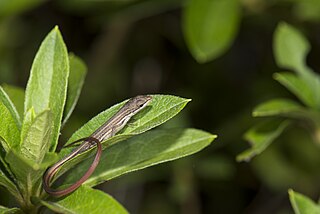 W
WTakydromus viridipunctatus is a species of lizard in the family Lacertidae. It is endemic to Taiwan.
 W
WGekko gecko, the tokay gecko, is a crepuscular arboreal gecko in the genus Gekko, the true geckos. It is native to Asia and some Pacific Islands.
 W
WTrimeresurus stejnegeri is a species of venomous pit viper endemic to Asia. Two subspecies are currently recognized, including the nominate subspecies described here.
 W
WTrimerodytes percarinatus, commonly known as the eastern water snake, olive keelback, olive annulate keelback or Chinese keelback water snake, is a species of snake in the subfamily Natricinae.
 W
WThe Chinese softshell turtle is a species of softshell turtle that is endemic to China, with records of escapees—some of which have established introduced populations—in a wide range of other Asian countries, as well as Spain, Brazil and Hawaii.
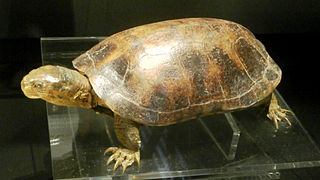 W
WThe yellow pond turtle, is a medium-sized, semi-aquatic turtle in the family Geoemydidae. This species has a characteristic broad yellow stripe extending behind the eye and down the neck; the carapace ranges in color from grayish brown to brown and the plastron is yellow or orange with black blotches along the outer edges. It is found in East Asia, ranging from central Vietnam, north through the coastal provinces of south and central China. Additional insular populations are found in Taiwan, Hainan, Ryukyu Islands, and Japan. The Japanese populations are believed to have been introduced as a result of imports from Taiwan.
 W
WThe yellow-lipped sea krait, also known as the banded sea krait, colubrine sea krait, is a species of venomous sea snake found in tropical Indo-Pacific oceanic waters. The snake has distinctive black stripes and a yellow snout, with a paddle-like tail for use in swimming.
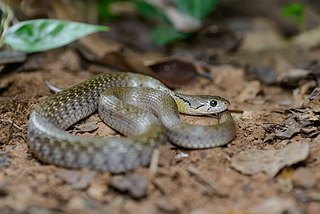 W
WThe yellow-spotted keelback is a species of colubrid snake found in India,Myanmar, Thailand, China, West Malaysia, Laos, Cambodia, Vietnam, Indonesia Its type locality is: Island of Hong Kong and Canton River?, China